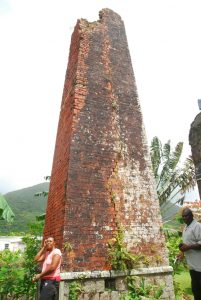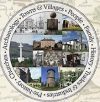The Government’s slave compensation records from 1834 reveal that many of Renfrewshire’s landed elite owned hundreds of African men, women and children on sugar plantations. Contrary to the misconception that Scots were banned from the empire before the Union of 1707, the connections started early. From the 1640s, ships from the lower Clyde ports ventured to the Caribbean.
James Milliken was born in 1669, the year after Port Glasgow was founded. One of the reasons why Renfrewshire’s slave ownership has been hidden for so long, is that those involved tried to cover up their activities. In the history books, Milliken was allegedly a career soldier who rose to the rank of major in the British army. However, Milliken’s father was a seafarer in Irvine, and his uncle was a partner in Glasgow’s first sugar house. Through their influence, Milliken ventured to the Leeward islands c.1690, as a slave overseer (not a soldier). When the French were driven out of St Kitts from 1710, Milliken acquired the 200-acre Monkey Hill plantation. This was the family’s main source of income for the next century. The Sugar Works Chimney, at Monkey Hill, St. Kitts still stands today.
James Milliken was among the first of the new sugar elite to invest in Renfrewshire. He came home from the Caribbean in 1729 and acquired half of Johnstone estate from the Houstons. He demolished Johnstone castle, and built a mansion, renaming his new estate ‘Milliken’. He expanded his estate, and became patron of the parish kirk.
Milliken died in 1741 and was succeeded by his son James II of Milliken. In the third generation, Milliken’s grandsons went on the Grand Tour, but died in Paris and Venice in their early twenties. In 1768, the estate went to their sister, who had married a Napier, and the family became the ‘Napiers of Milliken’. By the 1780s the family were the third largest landowners in Renfrewshire, dominating Kilbarchan and surrounding parishes.
Returning to our interest in the slave compensation records. In 1834 the second Napier of Milliken was awarded £2,555 (nearly £200,000 at today’s value) in compensation, for the loss of 161 enslaved Africans on his Monkey Hill sugar plantation, St Kitts. Given the death rate and through managing plantations of associates, the family had worked their way through thousands of Africans between 1710 and 1834.
Much of the money that the Napier-Millikens poured into Kilbarchan parish and its church, came directly from the labour of their African slaves. Through their sugar fortune, and the improving ideas brought home, the Millikens were described as the earliest enclosers and improvers in Renfrewshire, and the main financers of new roads and bridges.
The Milliken’s wealth and route to fortune influenced others to invest in sugar plantations. Two years after the return of the first James Milliken to Scotland, his neighbour, Cunningham of Craigends acquired a plantation in Jamaica. More about the Cunninghams next month.

The Sugar Works Chimney
© 2019 Stuart Nisbet

